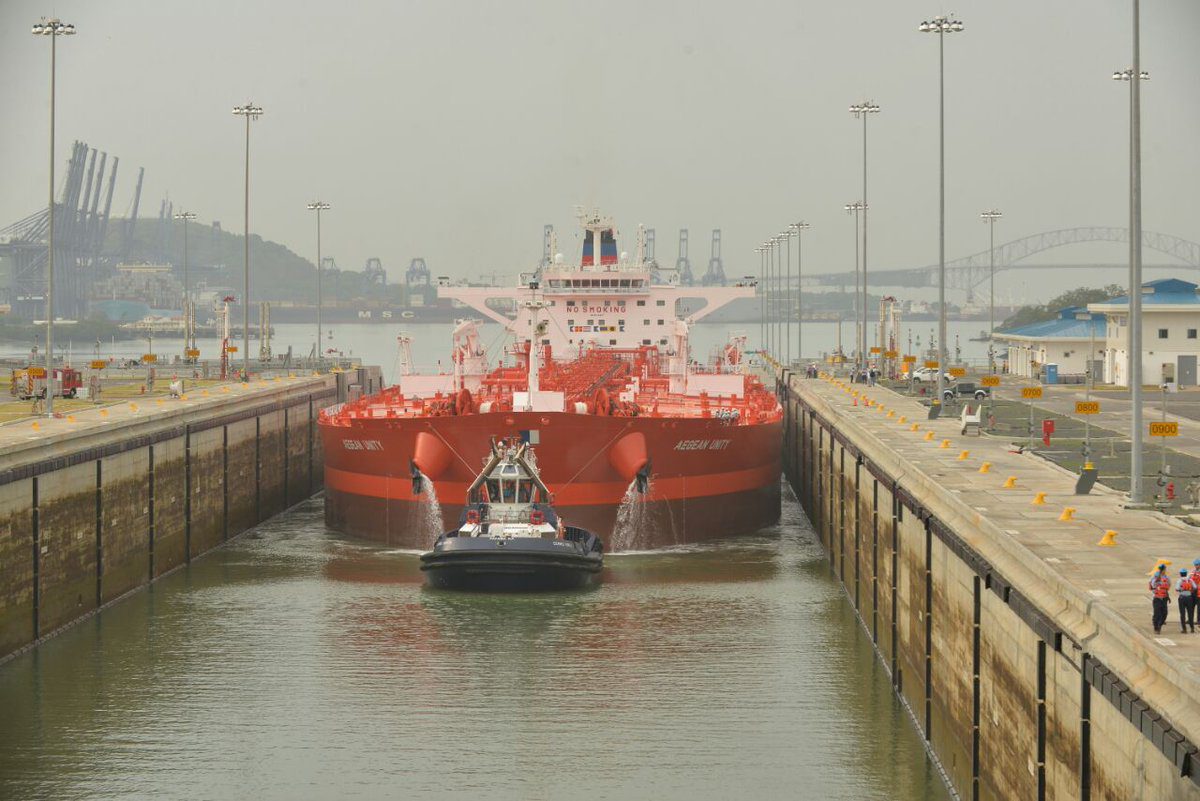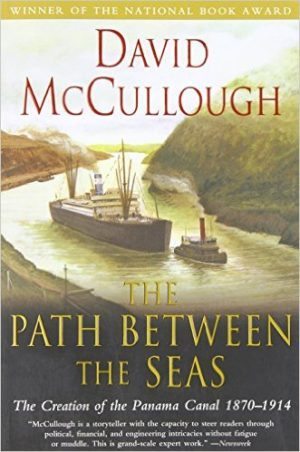Global Crude in Transit Reaches Record 1.24 Billion Barrels as Supply Surges
A flotilla of crude oil on the world’s oceans expanded to a fresh high as producer nations keep adding barrels and the tankers sail further for deliveries.

The MT Aegean Unity becomes the first crude oil tanker to transit the Panama Canal’s new locks, August 18, 2016. Photo: Panama Canal Authority
The modifications to these bigger oil carriers – which mostly involve fittings such as chocks and bits that secure the ship’s dock and tow lines – are needed because the new locks that opened in June use tug boats rather than locomotives to pull vessels.

While only a fraction of the vessels that previously transited the canal carried oil, its expansion caught the eye of traders hoping to gain faster and cheaper access to international markets on bigger tankers. But even if what those ships now fit through the new locks, many lack the minimum required mooring equipment for the expanded canal.
Although the new standards were published in advance of the canal’s opening, the required retrofits come as the shipping industry is already facing financial strain, adding another wrinkle to an opening beset by cost overruns and several incidents in which ships scraped the walls of the new canal amid concerns about its design.
There are more than 900 Aframax tankers in the global fleet and around 500 Suezmax vessels, according to shipping experts, who estimate between half to more than three-quarters of the vessels, especially those built before 2015, would need retrofits.
The portion of Aframax vessels requiring the retrofits is higher than those in the Suezmax fleet, one ship analyst said.
Vessels must be dry docked, or taken out of service, for the refittings. While the new parts cost just $1,000 to $3,000 per ship – pocket change in the expensive world of shipping – additional charges associated with the work can tally up to $100,000 to $150,000, several sources said.
Sandith Thandasherry, chief officer of Navgathi Marine Design and Construction, an India-based vessel servicer, said so far this year his firm has already completed six retrofits for Aframax tankers with the new Panama route in mind.
Ship servicers must also get approval for their work from the Panama Canal Authority and vessel classification societies.
Early on, Thandasherry says his company received approvals from the Canal Authority on ship modifications within a week’s time, unusually fast. This process has slowed in recent weeks, an indication that the number of applications for retrofits is rising, he said.
“I know for sure that the number of people who are applying is increasing after the opening,” said Thandasherry.
The Panama Canal Authority did not respond to a request for comment about the new mooring requirements and approval process.
Most ship owners are opting to do retrofits during other scheduled dry dock work. The added costs come at a time of rock-bottom shipping rates amid global oversupply.
“The current market conditions are challenging for many ship owners. So retrofit measures can be a financial strain,” said Daniel Abt, an inspection engineer for DNV GL, a classification society that approves such vessel modifications.
Abt said the retrofits are not just for oil tankers but also for container ships.
SLOW UPTAKE
Though the new locks were mostly expected to boost container ship traffic, the canal’s greater depth and wider dimensions put tankers in play too.
Only a handful of Aframax tankers could fit the dimensions of the old canal. Now 86 percent can get through the expanded canal fully laden, according to ship brokerage Galbraiths Ltd.
While no Suezmax vessels could fit through before, now 74 percent can get through partially laden, Galbraiths said, but only if they have the proper mooring equipment.
In mid-August, the Aegean Unity, a Greece-flagged vessel, became the first Suezmax tanker to transit the canal. But that ship, built in 2016 and partially laden, may have been an exception.
Brokers said, for now, there is a scarcity of ships with the right specs to go through the new canal and that current price spreads between international crude grades discourage such movements.
Once more ships are retrofitted and crude prices change, tanker traffic could pick up. Transit through the canal instead of around the tip of South America could save more than $300,000 on a voyage from the Caribbean to the U.S. West Coast, according to brokers.
“It will become a trade route for sure, but it will happen over time,” said one ship broker.
(Reporting by Liz Hampton; Editing by Terry Wade and Cynthia Osterman)
© 2016 Thomson Reuters. All rights reserved.

Sign up for gCaptain’s newsletter and never miss an update

Subscribe to gCaptain Daily and stay informed with the latest global maritime and offshore news
Essential news coupled with the finest maritime content sourced from across the globe.
Sign Up